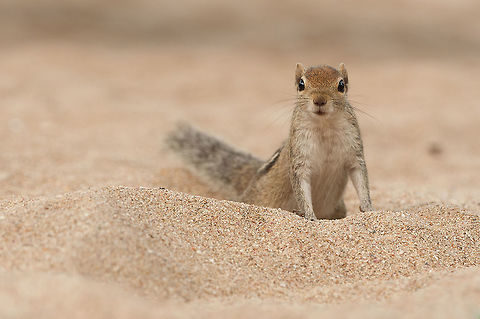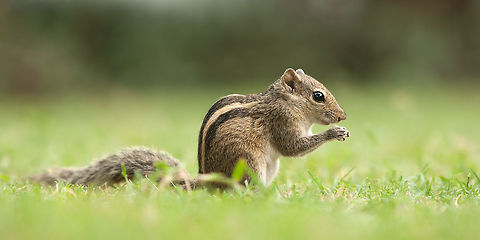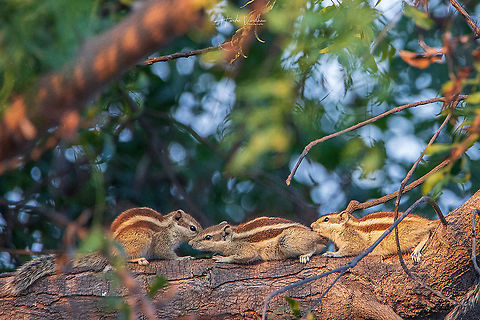
Appearance
The palm squirrel is about the size of a rat, with a bushy tail slightly shorter than its body. The back is a grizzled, gray-brown colour with three conspicuous white stripes which run from head to tail. The two outer stripes run from the forelegs to the hind legs only. it has a creamy-white belly and a tail covered with interspersed, long, black and white hairs. The ears are small and triangular. Juvenile squirrels have significantly lighter coloration, which gets progressively darker as they age. Albinism is rare, but exists in this species.
Behavior
The gestation period is 34 days; breeding takes place in grass nests during the autumn. Litters of two or three are common, and average 2.75. The young are weaned after about 10 weeks and are sexually mature at 9 months. Adult weight is 100 g. Little is known about their longevity, but one specimen lived 5.5 years in captivity.These squirrels eat mainly nuts and fruits. They are fairly vocal, with a cry that sounds like "chip chip chip" when danger is present. They are opportunists in urban areas, and can be easily domesticated and trained to accept food from humans. Naturally active, their activity reaches levels of frenzy during the mating season. They tend to be very protective of their food sources, often guarding and defending them from birds and other squirrels.
Food
These squirrels eat mainly nuts and fruits. They are fairly vocal, with a cry that sounds like "chip chip chip" when danger is present. They are opportunists in urban areas, and can be easily domesticated and trained to accept food from humans. Naturally active, their activity reaches levels of frenzy during the mating season. They tend to be very protective of their food sources, often guarding and defending them from birds and other squirrels.References:
Some text fragments are auto parsed from Wikipedia.